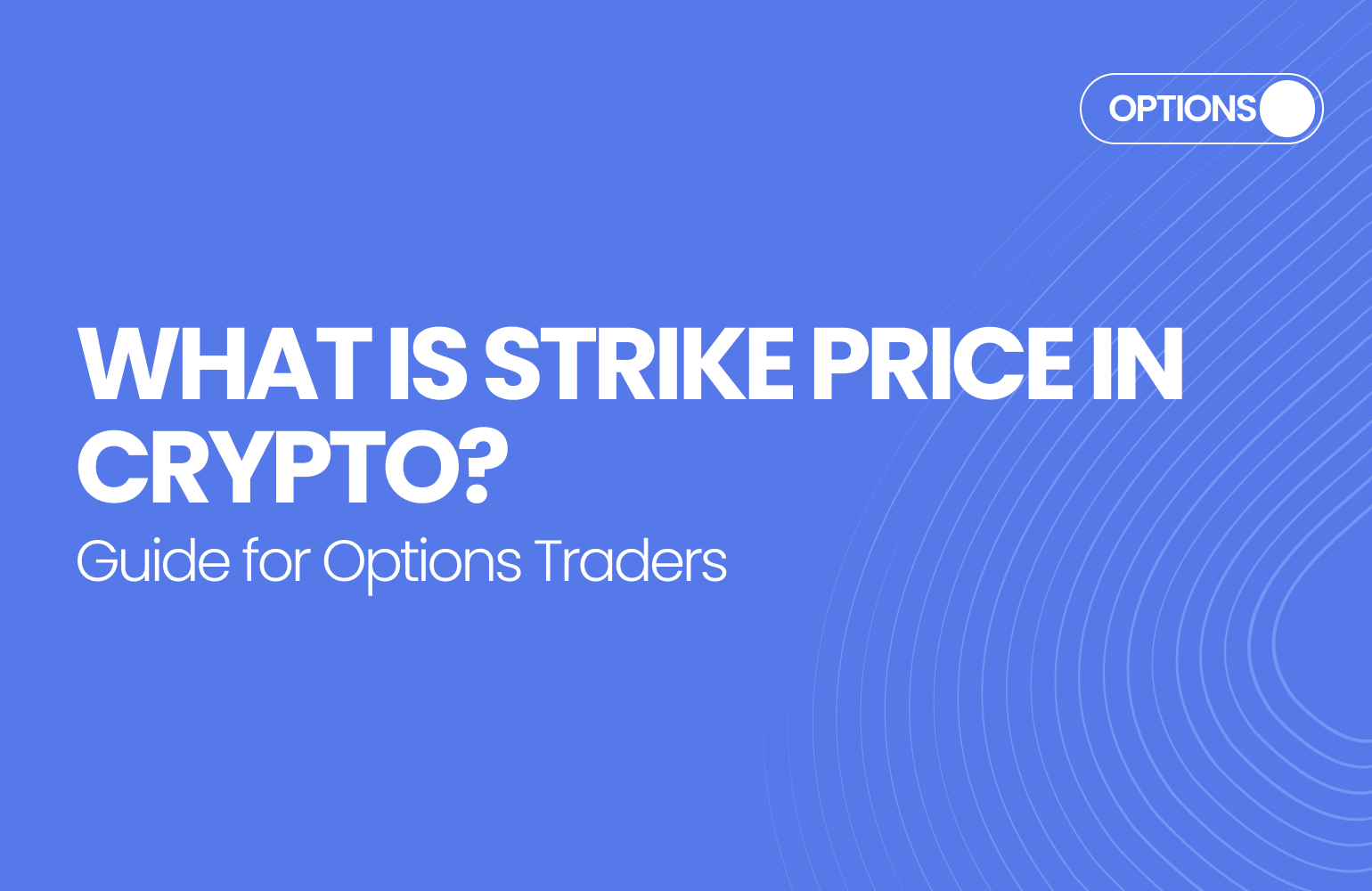Key Takeaways:
- Strike price = price where you can buy (call) or sell (put).
- It defines moneyness, intrinsic value, and premium.
- Choosing the right strike depends on outlook, expiry, and risk tolerance.
When it comes to options trading, one number can make or break your entire trade: the strike price. It doesn’t just define your entry point, it directly determines your profit, risk, and strategy.
If you’re diving into digital assets, knowing what is strike price in crypto is non-negotiable. In this guide, we’ll explain the strike price meaning, how it impacts both call and put contracts, and how to select the right level based on your market outlook.
What Is a Strike Price in Options?
The strike price in options (also called the exercise price) is the fixed price at which the buyer of an option can buy (call) or sell (put) the underlying asset.
In crypto markets, the underlying asset is typically BTC, ETH, or SOL. The strike price sets the threshold for profitability:
- Call options: price above which the trade becomes profitable
- Put options: price below which the trade becomes profitable
Example:
You buy a BTC call with a strike price of $60,000.
If BTC rises to $65,000 → your option has intrinsic value of $5,000 per BTC (minus premium).
Read More: What are Call and Put Options in Crypto
Strike Price and Profitability
1. Moneyness: ITM, ATM, and OTM
The meaning of strike price is tied to an option’s moneyness:
In-the-Money (ITM):
- Call: Spot > Strike
- Put: Spot < Strike
At-the-Money (ATM):
- Spot = Strike
Out-of-the-Money (OTM):
- Call: Spot < Strike
- Put: Spot > Strike
Impact:
- ITM options are more expensive but carry higher profit probability.
- OTM options are cheaper, riskier, and often used for speculative trades.
2. Intrinsic vs. Extrinsic Value
- Intrinsic Value: Profit if exercised immediately (spot – strike).
- Extrinsic Value: Premium above intrinsic (reflects time, volatility, etc.).
The strike price meaning in options directly controls intrinsic value. The further ITM the option, the higher its intrinsic worth.
Learn More: Intrinsic vs. Extrinsic Value of Options Explained
Choosing the Right Strike Price for Crypto Options
Step-by-Step Approach
1. Define your view:
- Bullish = buy call
- Bearish = buy put
2. Estimate move:
How far might BTC/ETH/SOL move before expiry?
3. Pick strike range:
- Conservative = ITM
- Balanced = ATM
- Aggressive = OTM
4. Check breakeven:
- Call = Strike + Premium
- Put = Strike – Premium
Example Scenarios
- BTC at $60,000, bullish to $66,000:
- Conservative: Buy $58k call (ITM, safer, pricier)
- Speculative: Buy $64k call (OTM, cheaper, riskier)
- ETH at $3,200, bearish to $2,900:
- Buy $3,100 put = ATM → balanced premium and probability
Pro Tip: Always align the options strike price with your expected move and risk appetite.
Strike Price and Options Pricing
The strike price plays a huge role in options pricing and premiums.
- Implied Volatility (IV): OTM contracts are more sensitive to IV changes.
- Delta: Indicates probability of finishing ITM.
- ATM Delta ≈ 0.50
- Deep ITM Call Delta ≈ 0.80–0.90
- Deep OTM Call Delta ≈ 0.10–0.20
In short, call option pricing and puts alike are heavily shaped by the strike you select.
Strike Price in Crypto Options
In crypto, strike prices define how BTC, ETH, or SOL contracts are structured on exchanges like Pi42. You’ll often see wide ladders of strike levels to accommodate high volatility.
👉 Some traders even search for “options stike price in crypto” when learning. This refers to the same concept, just applied to Bitcoin and Ethereum markets.
Conclusion: Strike Price Drives Profitability in Options
The strike price isn’t just a number, it defines profitability, premium, and risk. Whether trading equities or crypto, knowing what is strike price in crypto gives you a massive edge.
👉 Ready to trade smarter? Explore real-time Strike Price in Crypto Options with Pi42’s advanced tools.
Frequently Asked Questions
Can I change the strike price after buying?
No. Once the contract is live, the strike is fixed.
Is it better to buy ITM or OTM options?
It depends: ITM costs more but carries higher probability, while OTM is cheaper but riskier.
How many strike prices are there?
Exchanges list a wide range, usually in steps (e.g., $500 intervals for BTC).
Do strike prices affect liquidation?
Not like futures. But picking the wrong strike may lead to the option expiring worthless.
Keep Learning

